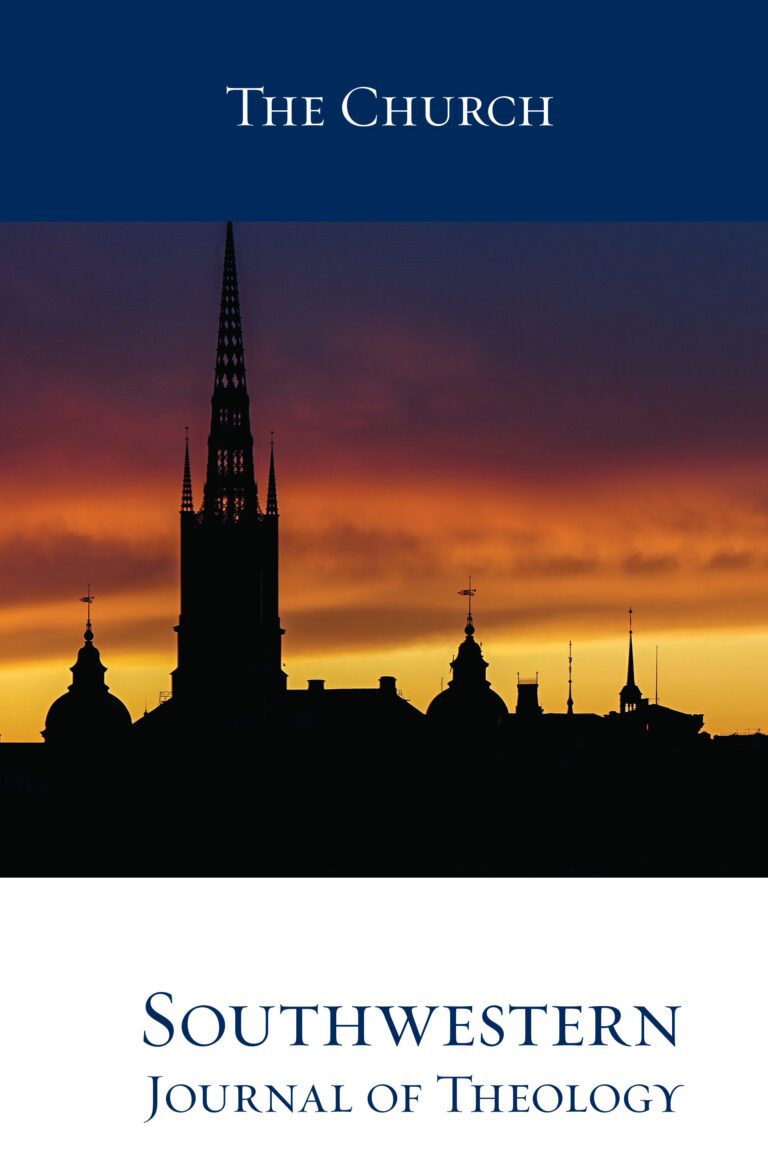
The Church
Southwestern Journal of Theology
Volume 61, No. 1 – Fall 2018
Editor: W. Madison Grace II
By Kevin J. Vanhoozer. Grand Rapids: Brazos, 2016. 288 pages. Hardcover, $24.99.
The sixteenth-century Reformation(s), which birthed the Protestant movement, is often charged with perpetuating “radical religious individualism,” “hermeneutical recklessness,” and “interpretive anarchy.” In Biblical Authority after Babel, Kevin J. Vanhoozer, Research Professor of Systematic Theology at Trinity Evangelical Divinity School, defends the Protestant Reformation against common accusations by retrieving the reformational solas (sola gratia, sola fide, sola scriptura, solus Christus, and soli Deo gloria). He argues that the rampant “interpretative egoism” and “criminal negligence of tradition” arise from a misunderstanding, rather than genuine appropriation, of the dogmatic principles of the Reformation. The solas provide the theological resources to confront interpretative pluralism while the doctrine of the priesthood of all believers (which he likens to a “virtual sixth sola: sola ecclesia”) speaks to the issue of interpretive authority (29).
In chapter one, Vanhoozer argues that sola gratia was a Protestant rebuke against late medieval sacramentalism, which, in postulating a “sliding scale” of nature and grace, elevated the human capacity to appropriate grace. Developing the ontological significance of God’s grace for the interpretation of Holy Scripture, Vanhoozer writes, “Grace is not simply the content of the gospel but the overarching framework of its communication and reception.” In this light, the triune God’s antecedent perfection (a corollary of God’s gratuitousness ad extra) funds the Christian reading of Scripture. Sola gratia therefore answers the problem of secularization: first, by providing a theological center of gravity—the gracious overflow of triune love is the economy of redemption—and second, by viewing the biblical text as “divine address” and thus placing the interpretative act within the economy of redemption. The interpreter is caught up in the gracious “communicative domain of the triune God” (50).
Chapter two appropriates Alvin Plantiga’s Reformed epistemology—mainly, the notion of epistemic dependence—in order to develop an interpretive via media that eschews both “absolute certainty” and “relativizing skepticism” (105). Sola fide indicates the significance of the ecclesial community as human beings necessarily rely on others in developing their beliefs. Vanhoozer explains, “Sola fide promotes, then, not individualism but a righteous polis: a city and citizenship of the gospel, an interpretive community whose mandate is to profess and perform a word that indwells yet that also stands over against it, a word to which the church must measure up” (103).
Chapter three puts forward a “catholic biblicism” by setting sola Scriptura in relation to the other four solas and the ecclesial community. Within the economy of grace, the Holy Spirit guides the community’s reception of Scripture. As ecclesial tradition is caught up in the economy of redemption, it becomes a faithful arbiter of interpretive authority. The authority of tradition is derived and “provisional” but nonetheless authentic. He concludes, “Scripture alone is the supreme authority, but God in his grace decided that it is not good for Scripture to be alone. He thus authorized tradition, and Scripture” (144).
Chapter four looks to overcome Protestantism’s excessive diversity by positing an ecclesiology grounded in Reformational solas. To this end, Vanhoozer repositions the doctrine of the priesthood of all believers as an ecclesiological consequence of solus Christus. By virtue of union with Christ, the believer is united to all members of the one true church. Therefore, Scripture’s proper interpretive context encompasses both the local congregation and the universal church.
In chapter five, Vanhoozer argues that the church is commissioned to glorify God (soli Deo Gloria) through visible and outward unity. Such fellowship is achieved through “strong denominationalism” wherein individual churches come together by retrieving the gospel “contextually” despite disagreement over nonessentials. Vanhoozer identifies “first-level” or essential doctrines which demand common assent due to their close proximity to the gospel. He also offers suggestions for future cooperation among Protestants, including transdenominational “table talk.” In this vision for outward fellowship, denominational diversity is welcomed and celebrated rather than bemoaned. Provocatively, Vanhoozer argues that “some [doctrinal] differences may be divine, intended by God for the enrichment of the church” (207).
Readers expecting a detailed account of Reformational theology or the historical context of the sixteenth-century will be disappointed. The author’s contribution lies elsewhere in offering a constructive and somewhat fluid theological retrieval (which entails a dose of repetition and creativity) of the past in order to illumine the present. For instance, in retrieving the doctrine of the priesthood of all believers, Vanhoozer discerns the significance of the interpreting community and thereby curtails the common misappropriation of sola scriptura that leads to interpretative anarchy. Evangelicalism often exhibits a certain ambiguity regarding the hermeneutical role of the ecclesial community—a naïve biblicism which tends toward interpretive subjectivism. Recognizing such a predicament, Vanhoozer recasts the Reformers’ vision for “catholic unity under canonical authority” which situates scriptural reading within the ecclesial community, both past or present. Ecclesial tradition is the “‘long past’ of the Spirit’s work” which possesses an “appointed role in the economy of salvation” (139, 143). Moreover, tradition is the Church’s “corporate testimony” and “consensus teaching on Scripture’s fundamental story line” (205; 137). This catholic orientation confronts the individualism of many evangelical faith communities.
In conclusion, Biblical Authority after Babel is a welcome contribution on the five-hundredth anniversary of the Reformation. The book exhibits characteristic traits of Vanhoozer’s other writings—commanding rhetoric, compelling argumentation, and theological ingenuity. Vanhoozer offers a persuasive defense of the Protestant Reformation by adequately addressing the concerns of detractors and resourcing the reformers’ dogmatic principles of the Reformation for the church today.





